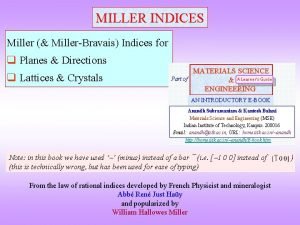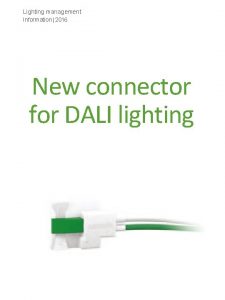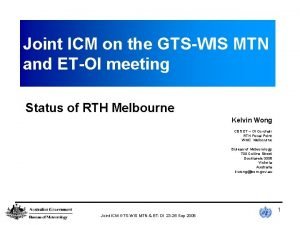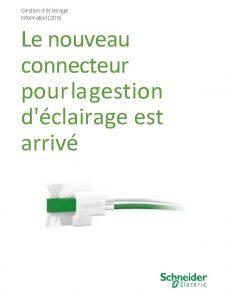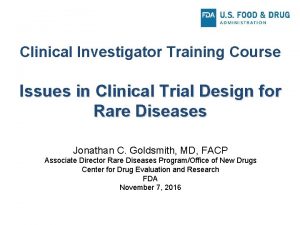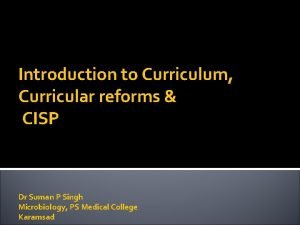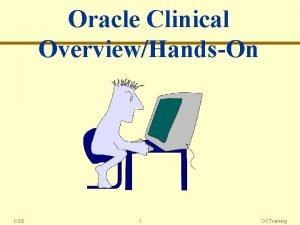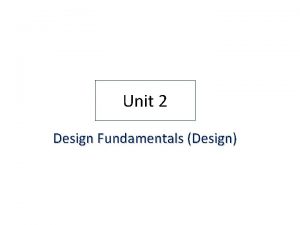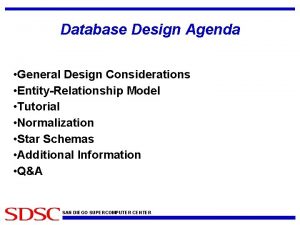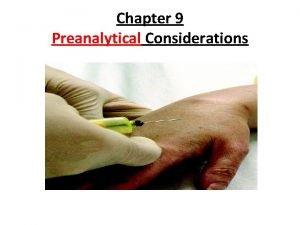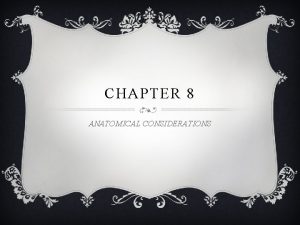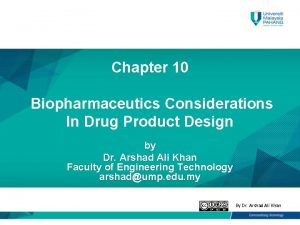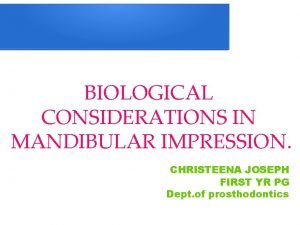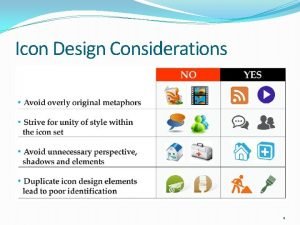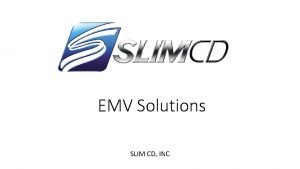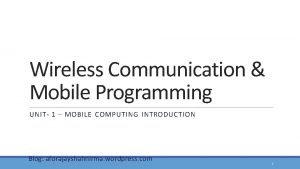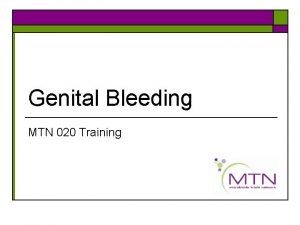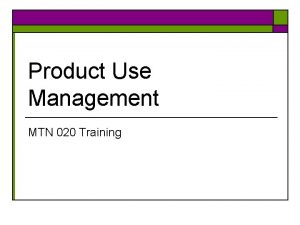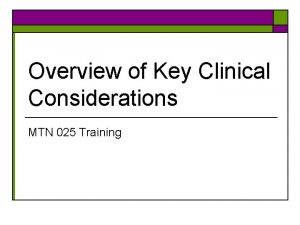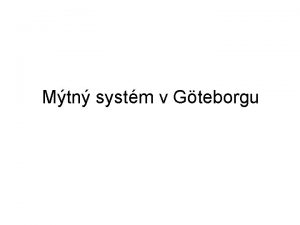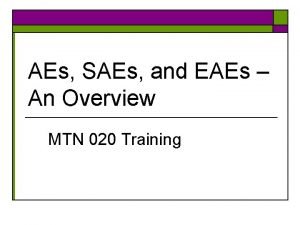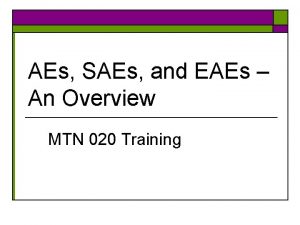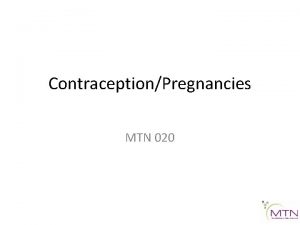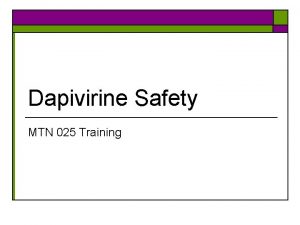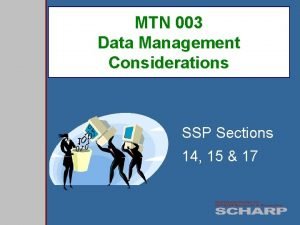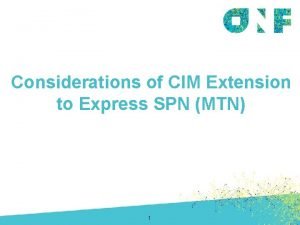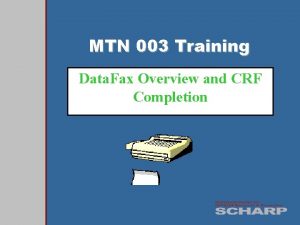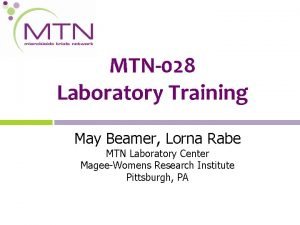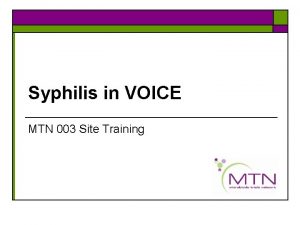Clinical Considerations MTN 020 Training Outline o o










































- Slides: 42

Clinical Considerations MTN 020 Training

Outline o o o Medical Menstrual History Update Physical and Pelvic Exams Pelvic Exam Terminology Pelvic Exam and Specific Visit Considerations Specific Clinical Management Considerations

Follow-Up Medical/Menstrual History o o An updated participant self reported medical/menstrual history is required at each scheduled visit Two objectives of the follow-up history n n o Determine whether previously documented conditions have changed Determine whether new AEs have occurred since the last history was obtained History should also be obtained at interim visits, as clinically indicated

Follow-Up Medical/Menstrual History Documentation o “How are you? ” n o Review PRE-CRF n n o Chart note Follow-up on ppt-reported baseline symptoms/conditions still ongoing Document resolution of ppt-reported items in chart notes Review AE and GAE CRFs n Follow up on and update as needed ppt-reported conditions on AE and GAE CRFs that are continuing; add new events as needed o Menstrual history/dates captured on Family Planning CRF (covered previously) o Cross-check with Con Meds Log as needed

Follow-up Medical History Documentation and Considerations o Documentation of review is required in a chart note, even if nothing has changed n o Example: “Ppt reported no changes in conditions or symptoms since last visit” Participants will see a number of staff members throughout the visit and may report different or varying symptoms during the visit n How will the team ensure that documentation is consistent in the chart notes? How will discrepancies be addressed?

Physical and Pelvic Exams

Physical Exam o Required at n n n o o Applicable physical exam CRF is recommended source document (Screening, Enrollment, Abbreviated) Medically relevant abnormal findings n n o Screening Enrollment (abbreviated) Quarterly (abbreviated) PUEV (abbreviated) When clinically indicated (abbreviated) Per Baseline Med Hx presentation, transcribe medically-relevant abnormal findings at SV or EV onto PRE CRF During follow-up, transcribe abnormalities onto GAE or AE CRF as needed All visits – cross-reference with Con Meds Log

Physical Exam o Vital signs n n n Height Weight Oral temperature Blood pressure Pulse Respirations o Clinical assessments of n n n n n l General Appearance Lymph nodes Neck Heart Lungs Abdomen Extremities Neurological Skin Other assessments at discretion of examining clinician

Pelvic Exam l n When is it performed? l Screening, Semi-Annually, PUEV/early termination, and as clinically indicated l No longer required at Enrollment per LOA#1 Pay careful attention to which evaluations are required at all exams, which are required at some but not all exams, and which are required only when clinically indicated

Pelvic Exam o o o To be performed after the ring comes out Two person team: examining clinician and assistant Ensure all possibly-required supplies and paperwork are easily accessible in exam room Review specimen collection requirements for each visit in preparation for each exam Pay careful attention to the required sequence of swab collection and required handling of each swab


Self Collected Vaginal Swabs o o o Collected at Enrollment (Lo. A#2), Monthly, PUEV, and Termination Visits May be collected by clinician if a pelvic exam is to be done at the visit Collect swab even if ppt is menstruating IMPORTANT: collect swab while ring from previous visit is still in place Collection of swab, blood on swab, and ring placement at swab collection documented on Specimen Storage CRF

Pelvic Exam Terminology

Well-Defined Terms o o Makes communication between investigators easier Can be used to doublecheck what is recorded regarding intactness of the epithelium and blood vessels

Pelvic Exam Terminology o To document findings, use terms from the pelvic exam case report form or FGGT o These terms largely match the FGGT n n Ecchymosis is listed on CRF but not on FGGT Petechiae is listed neither place but is referenced in protocol o n Always grade 1 per SSP Use routine QC/QA opportunities to help ensure consistency of terminology across staff and exams

Common Pelvic Finding Terms o o o o Erythema Edema Petechiae Ecchymosis Peeling Ulceration Abrasion Laceration

Pelvic Exam Findings Review Epithelial Disruption Erythema Edema ALL IMPACT PRODUCT USE

Epithelial Disruption o o Extent of epithelial disruption helps to distinguish between findings Superficial epithelial disruption n o Does not penetrate into the subepithelial tissue Deep epithelial disruption n Penetrates into and exposes subepithelial tissue and possibly vessels

Epithelial Disruption (2) o If bleeding from finding is present, disruption should be recorded as deep when in doubt o Assessment of disruption depth is subjective, even with magnification of colposcopy

Normal Cervix o o Mucosa n Typically uniformly pink n Epithelium intact n Vessels intact Normal variants are not lesions n Ectropion n Gland openings n Scarring from cone biopsies

Normal Findings o Ectopy

Normal Findings o Nabothian cysts

Erythema o Reddened areas n n n Margins may or may not be clearly defined Epithelium intact Vessels intact

Edema o Epithelium n n o Vessels n o Intact Swollen Intact Color n Normal or pale white

Petechiae o o o Punctate red areas Individual or group Epithelium intact Vessels disrupted Diameter ≤ 3 mm Color of finding is red or purple

Ecchymosis o o Epithelium intact Vessels disrupted Size >3 mm Color is red or purple

Peeling o o o Epithelium disrupted but superficially Vessels intact Fragment may remain attached to area of peeling Generally welldemarcated Underlying epithelium appears normal

Ulceration o Disrupted epithelium n o o o Superficial or deep Vessels intact or disrupted May include sloughing Sharply demarcated outline

Abrasion o Epithelium disrupted n o o Superficial or deep Vessels intact or disrupted Diffuse or poorly demarcated outline

Laceration o o A “cut” or “fissure” Epithelium disrupted n Superficial or deep Vessels intact or disrupted Appears to be linear “pulling apart” or wearing away of tissue

Pelvic Exam and Specific Visit Considerations

Screening Visit Pelvic Exam Considerations o o As described previously, document all findings on Pelvic Exam Diagrams; abnormal findings on Screening Pelvic Exam CRF and PRE CRF Grade 2 or higher findings are exclusionary, but a repeat exam may be performed to establish eligibility n n covered during SV Overview presentation so not collect pelvic specimens for storage at repeat exams

VR Placement Check at Enrollment and Month 1 o o o No exam required; HOWEVER, assessment of ring placement is required!!! Participant must demonstrate the ability to insert and remove the ring Clinician must perform digital exam to check ring placement

VR Placement Check o On digital exam, ring is proximal to the introitus and behind the pubic bone

Unscheduled PE During Follow-up o Pelvic exams will also be conducted as clinically indicated to follow up on symptoms or adverse events identified at a previous visit o Unscheduled pelvic exams should ONLY include procedures that are necessary to the follow-up n n All procedures on the pelvic exam checklist do not need to be conducted Specimens are not collected unless clinically indicated for local testing (no storage specimens)

Specific Management Issues

STI/RTI o Participants diagnosed during screening with an STI/RTI/UTI requiring treatment may be enrolled after treatment is complete provided all symptoms have resolved o Document on Pre-existing Conditions CRF when diagnosed at SV if ppt will be treated and proceed to EV n update to not ongoing at EV as applicable o o o RPR seropositivity may be ongoing Genital herpes may be ongoing Genital warts may be ongoing

STI/RTI Management o STIs/RTIs should be treated per WHO guidelines n Except for asymptomatic candidiasis and asymptomatic bacterial vaginosis neither require treatment per ASPIRE o WHO guidelines are minimum standard; if local guidelines set higher standard, follow local guidelines o Provide directly observed single dose regimens whenever possible o Document all treatments taken on Con Meds Log

STI/RTI Management o o Syndromic Management is acceptable per site SOP STI/RTI are considered resolved when treatment has been completed and symptoms, if any, have resolved n n No test of cure is required or result needed on CRF NB: For exclusionary infections diagnosed during screening, treatment must be completed, and symptoms must resolve, before enrollment

Syphilis o Clinical management of syphilis should include repeat serology (RPR) at six-month intervals to confirm treatment effectiveness n n o If RPR titre does not decrease four-fold or revert to seronegative within six months after treatment, treatment should be repeated NB: For syphilis infections diagnosed during screening, fourfold decrease is not required before enrollment SV syphilis result is captured on CRF (Screening Specimen Storage) and PUEV result on PUEV Lab Results

Vaginal Discharge o o Abnormal vaginal discharge is common and may be participant reported or clinician observed Evaluation is per clinician discretion and should be the same regardless of identifying source Treatment, however, may differ n If underlying diagnosis is STI, treat n If asymptomatic BV or yeast, no treatment required Record AE n Verbatim term should be underlying diagnosis (trichomonas, for example) UNLESS asymptomatic BV or yeast is uncovered n In that case, record “vaginal discharge per ppt report” or “vaginal –discharge-clinician observed” n If discharge is both participant reported and clinician observed, record “per ppt report”

Urinary Tract Infections o o o In ASPIRE, UTI is diagnosed by symptoms If diagnosed symptoms, grade by the main tox table If diagnosed by culture or urinalysis, grade per UTI row of the FGGT
 Ktkp-020
Ktkp-020 110 plane family
110 plane family Nit dicla 031
Nit dicla 031 Bioweb mtn
Bioweb mtn Mtn 025
Mtn 025 Knx multitouch
Knx multitouch Mtn web hosting
Mtn web hosting Mtn 684064
Mtn 684064 Icm new meteo
Icm new meteo Mtn 684064
Mtn 684064 Citation sandwich example
Citation sandwich example Clinical investigator training program
Clinical investigator training program Basic clinical observations training
Basic clinical observations training Dr suman jana
Dr suman jana Oracle clinical training ppt
Oracle clinical training ppt Asbmt clinical research training course
Asbmt clinical research training course Mrc career development award
Mrc career development award General consideration of machine design
General consideration of machine design Tax considerations for setting up a new business
Tax considerations for setting up a new business Software architecture of atm machine
Software architecture of atm machine Three considerations of societal marketing concept
Three considerations of societal marketing concept Mechanical considerations of transmission line
Mechanical considerations of transmission line Database design considerations
Database design considerations Contrasting acquisition
Contrasting acquisition What is cloud delivery model
What is cloud delivery model Writing strategies and ethical considerations
Writing strategies and ethical considerations Pre-analytical considerations in phlebotomy
Pre-analytical considerations in phlebotomy Bioreactor considerations for animal cell culture
Bioreactor considerations for animal cell culture Collaboration design considerations
Collaboration design considerations Fpd tooth preparation
Fpd tooth preparation Antecubial region
Antecubial region Biopharmaceutic considerations in drug product design
Biopharmaceutic considerations in drug product design Pear shaped pad mandible
Pear shaped pad mandible Spa vs dogso
Spa vs dogso Considerations icon
Considerations icon Fluid intake pdhpe
Fluid intake pdhpe Natalya hasan
Natalya hasan Quasi experimental design ethical issues
Quasi experimental design ethical issues Identify the device
Identify the device Design considerations for mobile computing
Design considerations for mobile computing Appendix example
Appendix example Non rebreather mask definition
Non rebreather mask definition Ethical considerations examples
Ethical considerations examples

